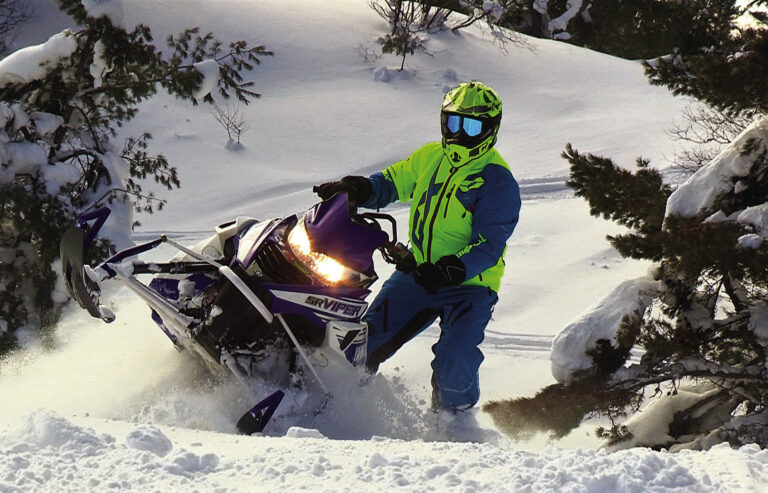For over three decades, snowmobilers have traversed Trail No. 422 to reach Miners Castle in Pictured Rocks National Lakeshore. The trail, long regarded as a critical artery for winter recreation in the region, has now been closed because of an expired agreement between the Alger County Road Commission and the Michigan Department of Natural Resources.
The contentious issue of shared use along a 0.8-mile stretch of H-58 has reached a breaking point, leaving stakeholders, local businesses and winter tourism advocates deeply concerned about the trail’s future.
The shared usage agreement, which allowed snowmobiles to use the shoulder of H-58 to cross the Miners River, expired on Sunday.
With no new agreement in place, the road commission officially closed the trail, citing safety concerns and damage to the newly repaved road as key reasons for its decision.
At a meeting held on Monday, the commission reiterated its proposal for a 10-year agreement contingent on $200,000 in funding from the DNR to install a wear-resistant surface. The meeting ended in an impasse, further complicating efforts to find a resolution.
Robert Lindbeck, manager of the ACRC, explained the road commission’s position, emphasizing both safety and fiscal responsibility.
“The road commission is concerned with the safety of snow- mobiles and vehicles sharing the same confined roadway, particularly in the guardrail section,” he said. “Additionally, we cannot allow significant damage to a public investment in newly paved asphalt without measures in place to mitigate it.”
Lindbeck added that the commission offered the DNR a 10year permit, contingent on funding to harden the road surface and reduce wear caused by snowmobile tracks. That proposal, however, was declined.
The DNR has argued that the $200,000 request is excessive and not an effective use of state snowmobile permit funds.
“We do not have any requests for similar agreements to this one,” said Stacy Welling Haughey, Upper Peninsula field deputy for the DNR. “This is very out of the ordinary, especially given that this corridor has been a successful route for over 30 years.”
Haughey explained that despite extensive efforts to explore alternate routes for Trail No. 422 since 2013, no feasible alternatives have emerged because of land ownership and environmental restrictions.
Haughey addressed recent suggestions about purchasing land south of H-58 as a potential reroute. “No, it does not connect to land we could run a trail to without still having to utilize the roadway,” she said.
She also noted the historical context of the agreement and the increased financial demands from the road commission.
“We offered in January of 2024 to harden the entire 0.8 miles by providing funding for a hardened asphalt mixture, and that offer was declined,” she said. “However, in conversations earlier this year, they are now asking for $200,000 over 10 years to renew the same agreement that has been in place successfully for approximately 30 years.”
The DNR has maintained that, despite ongoing efforts to identify alternate routes, the lack of access to private land has rendered a viable reroute impossible. “While we continue to explore options, land control remains a critical barrier, and we must work within these limitations,” Haughey said.
Part 2 of this series will explore the broader economic and cultural ramifications of Trail No. 422’s closure. Local stakeholders, including U.S. Rep. Jack Bergman, weigh in on how the trail’s loss could affect winter tourism and the economic livelihood it sustains. Perspectives from snowmobiling advocates, local businesses and community leaders provide a deeper understanding of what’s at stake — and what might come next.
“
The road commission is concerned with the safety of snowmobiles and vehicles sharing the same confined roadway, particularly in the guardrail section.
—Robert
Lindbeck
”
